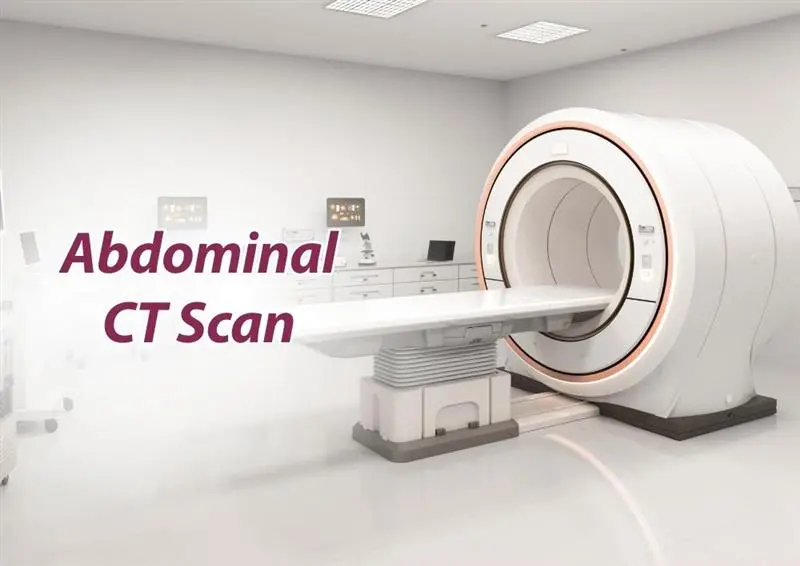Prostate Cancer: Myths and Facts, Types, Symptoms & Treatment Options
Prostate cancer, the most common cancer among men globally, typically develops slowly, originating from the gland cells of the prostate. Often asymptomatic in its early stages, symptoms such as urinary problems, erectile dysfunction, and pelvic discomfort may arise as the disease progresses. Age, family history, ethnicity, and dietary factors contribute to its risk factors, highlighting the importance of early detection through screenings. Treatment options may vary from active management to surgery, radiation therapy, hormone therapy, and chemotherapy, tailored to the cancer's stage and individual patient factors.
Looking for top-notch prostate treatment in Gurgaon? Choose Miracles Apollo Cradle/Spectra. Our expert prostate cancer specialists in Gurgaon offer personalized treatment plans tailored to your unique needs. With extensive experience and advanced techniques, trust us to provide exceptional care for your well-being. Take charge of your health journey with world-class urology care.
In this blog post, we'll discuss the myths and facts surrounding prostate cancer, covering its types, symptoms, risk factors, and treatment options.
What is Prostate Cancer?
Prostate cancer is a type of cancer that develops in the prostate gland, which is a small walnut-shaped gland located just below the bladder in men. The prostate gland plays an important role in the male reproductive system by producing some of the fluid that carries sperm during ejaculation.
Prostate cancer occurs when abnormal cells within the prostate gland grow and multiply uncontrollably, forming a tumor. If left untreated, prostate cancer can spread to other parts of the body, such as the lymph nodes or bones, and potentially become life-threatening. However, prostate cancer often grows slowly and may not cause significant symptoms or problems, particularly in its early stages. Regular screenings and early detection are essential for effective management and treatment of prostate cancer.
Types of Prostate Cancer
Prostate cancer primarily consists of different types of tumors, with the vast majority being adenocarcinomas, which originate from the glandular cells of the prostate.
Here are some of the main types:
-
Adenocarcinoma: Adenocarcinoma is the most common type of prostate cancer, accounting for over 90% of cases. It develops from the glandular cells of the prostate and typically grows slowly.
-
Sarcomas: Sarcomas are rare types of prostate cancer that develop in the connective tissues of the prostate, such as the muscles or blood vessels. They are more aggressive than adenocarcinomas and may require different treatment approaches.
-
Small Cell Carcinomas: Small cell carcinomas of the prostate are aggressive tumors that grow rapidly. They are less common than adenocarcinomas but tend to spread quickly to other parts of the body.
-
Transitional Cell Carcinomas: Transitional cell carcinomas, also known as urothelial carcinomas, originate from the cells lining the urethra and can sometimes spread to the prostate. They are more commonly associated with bladder cancer but can affect the prostate as well.
These different types of prostate cancer may require different diagnostic and treatment strategies, underscoring the importance of accurate diagnosis and classification.
Prostate Cancer Stages
Prostate cancer staging is crucial for determining the extent of the disease and guiding treatment decisions.
Prostate cancer is categorized into four main stages:
-
Stage I: At this stage, the cancer is confined to the prostate gland and is usually small in size. It may not cause any symptoms and is often detected incidentally during a biopsy performed for other reasons.
-
Stage II: Cancer at this stage is still confined to the prostate gland but may be larger in size than in Stage I. It may be detected through symptoms such as urinary problems or during routine screening tests like the PSA test and digital rectal exam (DRE).
-
Stage III: In Stage III, the cancer has spread beyond the prostate gland and may involve nearby tissues or organs such as the seminal vesicles. It may also affect nearby lymph nodes. Symptoms may become more pronounced at this stage, and the cancer may be detected through imaging tests such as MRI or CT scans.
-
Stage IV: This is the most advanced stage of prostate cancer, where the cancer has spread to distant parts of the body, such as the bones, liver, or lungs. It may also involve nearby lymph nodes. At this stage, the cancer is considered metastatic, and treatment focuses on controlling symptoms and managing the spread of the disease.
Within each stage, prostate cancer may be further classified based on factors such as the Gleason score and the level of prostate-specific antigen (PSA) in the blood.
Symptoms of Prostate Cancer
Prostate cancer symptoms can vary widely among individuals, and in many cases, the cancer may not cause noticeable symptoms, especially in its early stages. However, as the cancer progresses, some men may experience the following symptoms:
-
Urinary Problems: Changes in urinary habits are among the most common symptoms of prostate cancer. These may include:
-
Difficulty starting urination
-
Difficulty maintaining a steady stream.
-
Weak or interrupted urine flow.
-
Frequent urination, especially at night.
-
Pain or burning sensation during urination.
-
Blood in the urine or semen.
-
-
Erectile Dysfunction: Prostate cancer may affect erectile function, leading to difficulty in achieving or maintaining an erection.
-
Pelvic Discomfort: Some men with prostate cancer may experience pain or discomfort in the pelvic area, lower back, hips, or upper thighs. This discomfort can range from mild to severe and may worsen over time.
-
Bone Pain: Advanced prostate cancer that has spread to the bones may cause bone pain, especially in the spine, hips, or ribs. This pain can be continuous and may worsen at night or with activity.
If you experience any of the symptoms or have concerns about your prostate problem, it's important to consult a prostate cancer doctor near you for evaluation to find the causes of prostate cancer and appropriate management. Early detection and prompt treatment can significantly improve outcomes for men diagnosed with prostate cancer.
Myths and Facts of Prostate Cancer
Here are some myths and facts related to prostate cancer
Myth: Only older men get prostate cancer.
Fact: While age is indeed a significant risk factor for prostate cancer, younger men can also develop the disease. However, the risk increases significantly with age, and the majority of cases are diagnosed in men over the age of 65.
Myth: If you have prostate cancer, treatment is always necessary.
Fact: Not all cases of prostate cancer require immediate treatment. For some men, especially those with low-risk prostate cancer, watchful waiting may be a convenient option. This approach involves closely monitoring the cancer with regular check-ups and tests but not actively treating it unless it shows signs of progression.
Myth: Prostate cancer always causes noticeable symptoms.
Fact: In its early stages, prostate cancer often does not cause any symptoms. When symptoms do occur, they can be similar to those of other prostate conditions, such as benign prostatic hyperplasia or prostatitis. Common symptoms include urinary problems, erectile dysfunction, and pelvic discomfort, but these can vary widely among individuals.
Myth: Prostate cancer is always deadly.
Fact: While prostate cancer can be a serious disease, especially if it's detected at an advanced stage, many cases are slow-growing and may not significantly impact life expectancy. With early detection and appropriate treatment, the prognosis for prostate cancer is generally favorable. However, regular screenings are essential for early detection and better outcomes.
Myth: Having a family history of prostate cancer means you'll get it.
Fact: While having a family history of prostate cancer increases your risk of developing the disease, it doesn't guarantee that you'll get it. Most men with a family history of prostate cancer do not develop the disease themselves. However, it's essential to be aware of your family history and discuss it with your healthcare provider, as it may influence screening recommendations.
Myth: Prostate cancer screening tests are always accurate.
Fact: Screening tests for prostate cancer, such as the PSA test and digital rectal exam (DRE), have limitations and can sometimes produce false-positive or false-negative results. A high PSA level may indicate the presence of prostate cancer, but other non-cancerous conditions can also cause it. Likewise, a normal PSA level doesn't guarantee the absence of prostate cancer. Additional tests, such as a prostate biopsy, may be needed to confirm the diagnosis.
Risk Factors of Prostate Cancer
While having one or more risk factors doesn't guarantee that an individual will develop prostate cancer, understanding the prostate cancer causes can help identify individuals who may benefit from early screening and preventive measures.
Here are some common risk factors related to prostate cancer:
-
Age: Prostate cancer is more commonly diagnosed in older men, with the risk increasing especially after the age of 50. Majorly prostate cancer cases occur in men over the age of 65.
-
Family History: Men with a family history of prostate cancer, especially close relatives such as fathers or brothers, have an increased risk of developing the disease. The risk is even higher if multiple family members have been diagnosed with prostate cancer or if the relatives were diagnosed at a young age.
-
Race and Ethnicity: African-American men have a higher risk of developing prostate cancer compared to men of other racial and ethnic groups. They are also more likely to be diagnosed with aggressive forms of the disease.
-
Genetic Factors: Certain inherited genetic mutations, such as mutations in the BRCA1 or BRCA2 genes, have been associated with an increased risk of prostate cancer. These mutations are also linked to an increased risk of other cancers, such as breast and ovarian cancer.
-
Dietary Factors: Some research suggests that dietary factors may influence prostate cancer risk. A diet high in red meat and high-fat dairy products, as well as a low intake of fruits and vegetables, may increase the risk of prostate cancer. Conversely, a diet rich in fruits, vegetables, and whole grains may lower the risk.
-
Obesity: Obesity is associated with an increased risk of developing aggressive forms of prostate cancer and may also affect treatment outcomes.
-
Exposure to Certain Chemicals: Occupational exposure to certain chemicals, such as cadmium or Agent Orange, may increase the risk of developing prostate cancer.
It's important to note that having one or more risk factors doesn't mean that an individual will develop prostate cancer. Likewise, individuals without any known risk factors can still develop the disease. Regardless, being aware of these risk factors can help individuals make informed decisions about screening and lifestyle choices to reduce their risk of prostate cancer.
Prostate Cancer Diagnosis
Diagnosing prostate cancer typically involves a combination of screening tests, diagnostic procedures, and imaging studies.
Here's an overview of the steps involved in diagnosing prostate problems:
1. Screening Tests:
-
Prostate-Specific Antigen (PSA) Test: The PSA blood test measures the level of PSA, a protein produced by the prostate gland, in the blood. ncreased levels of PSA can indicate the existence of prostate cancer, but they can also be caused by other non-cancerous conditions such as benign prostatic hyperplasia (BPH) or prostatitis.
-
Digital Rectal Exam (DRE): During a DRE, the doctor inserts a gloved, lubricated finger into the rectum to feel the prostate gland for any abnormalities, such as lumps or hardening. While DRE alone cannot definitively diagnose prostate cancer, it can help detect abnormalities that may warrant further evaluation.
2. Diagnostic Procedures:
-
Prostate Biopsy: If screening tests suggest the possibility of prostate cancer, a prostate biopsy may be performed to confirm the diagnosis. During a biopsy, small tissue samples are taken from the prostate gland using a thin needle guided by transrectal ultrasound (TRUS) imaging. These tissue samples are then examined under a microscope by a pathologist to look for the presence of cancer cells.
3. Imaging Studies:
-
Transrectal Ultrasound (TRUS): TRUS is commonly used during prostate biopsies to provide real-time imaging guidance for the biopsy needle. It uses sound waves to create detailed images of the prostate gland and surrounding tissues.
-
MRI (Magnetic Resonance Imaging): MRI scans may be used to assess the extent of prostate cancer and determine whether it has spread beyond the prostate gland. MRI can provide detailed images of the prostate and surrounding structures, helping healthcare providers plan treatment more effectively.
4. Gleason Score: The Gleason score is a grading system used to evaluate the aggressiveness of prostate cancer based on the appearance of cancer cells observed in biopsy samples. The score ranges from 6 to 10, with higher scores indicating more aggressive cancer.
5. Staging: Staging helps determine the extent and spread of prostate cancer beyond the prostate gland. Common staging tests may include bone scans, CT (computed tomography) scans, or PET (positron emission tomography) scans to assess whether cancer has spread to nearby lymph nodes or distant organs such as bones.
6. Genetic Testing: Genetic testing may be recommended for individuals with a family history of prostate cancer or certain high-risk genetic mutations. Testing for mutations in genes such as BRCA1 and BRCA2 can provide additional information about the risk of developing prostate cancer and guide treatment decisions.
Overall, diagnosing prostate cancer involves a comprehensive approach that combines screening tests, diagnostic procedures, imaging studies, and careful evaluation of biopsy samples to accurately assess the presence, extent, and aggressiveness of the disease. Early detection and timely diagnosis are critical for effective treatment and improved outcomes for individuals with prostate cancer.
Prostate Cancer Treatment
Prostate cancer treatment varies based on several factors, including the stage of the cancer, the aggressiveness of the tumor, the patient's overall health, and personal preferences.
Treatment options may include:
-
Active Surveillance: For men with low-risk prostate cancer, active surveillance, also known as watchful waiting, may be recommended. This approach involves closely monitoring the cancer through regular check-ups, PSA tests, and biopsies, but not actively treating it unless there are signs of progression.
-
Surgery: Surgical removal of the prostate gland, known as a prostatectomy, may be recommended for localized prostate cancer. There are different surgical techniques available, including open surgery and minimally invasive procedures such as laparoscopic or robotic-assisted surgery.
-
Radiation Therapy: This therapy uses high-energy beams to target and destroy cancer cells. It can be delivered externally using a machine (external beam radiation therapy) or internally via radioactive implants (brachytherapy). It may be used either as a main treatment for localized prostate cancer or as adjuvant therapy following surgery.
-
Hormone Therapy: For growth, prostate cancer cells depend on male hormones, such as testosterone. The hormone therapy, also known as androgen deprivation therapy (ADT), aims to block the production or action of these hormones to slow down or stop cancer growth. It may be used alone or in combination with other treatments for metastatic or advanced prostate cancer.
-
Chemotherapy: This therapy is used for advanced or metastatic prostate cancer that has spread to other parts of the body. Chemotherapy uses drugs to kill cancer cells or slow down their growth. It may be given in combination with hormone therapy or as a standalone treatment.
-
Immunotherapy: This therapy works by stimulating the body's immune system to recognize and attack cancer cells. Certain immunotherapy drugs, such as sipuleucel-T, may be used for advanced prostate cancer that no longer responds to other treatments.
-
Targeted Therapy: Targeted therapy drugs are designed to target specific molecules or pathways involved in cancer growth and progression. Some targeted therapy drugs, such as abiraterone and enzalutamide, may be used for advanced prostate cancer that has become resistant to hormone therapy.
-
Clinical Trials: This evaluates new treatments or combinations of treatments for prostate cancer. Participating in a clinical trial may offer access to innovative therapies that are not yet widely available
The choice of treatment depends on various factors, including the stage and aggressiveness of the cancer, the patient's overall health and preferences, and potential side effects and risks associated with each treatment option. Patients need to discuss treatment options thoroughly with their healthcare providers to make informed decisions tailored to their individual needs and circumstances. Additionally, ongoing monitoring and follow-up care are essential to assess treatment effectiveness, manage side effects, and detect any signs of cancer recurrence.
Conclusion:
Understanding the myths and facts about prostate cancer is important for informed decision-making regarding prevention, screening, and treatment. By dispelling misconceptions and getting accurate information, individuals can take proactive steps to safeguard their prostate health and overall well-being. Regular screenings, healthy lifestyle choices, and open communication with urologists are important components of prostate cancer prevention and management.
Concerned about your prostate health? Schedule a consultation with our expert prostate cancer doctors at Miracles Healthcare. Our experienced urologists specialize in diagnosing and treating prostate conditions, including cancer. Don't wait until it's too late, take proactive steps to safeguard your health. Contact us today for personalized care and support tailored to your needs. Our facilities in Sec 14, Sec 56, and Sec 82 make accessing healthcare convenient for Gurgaon residents.














Was the information useful?
3 0